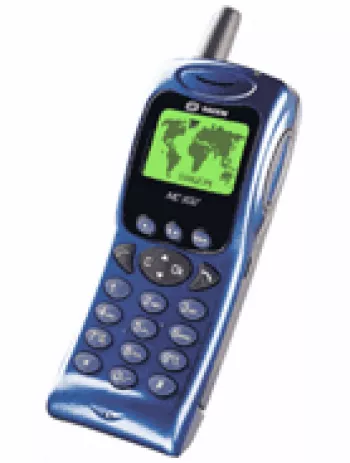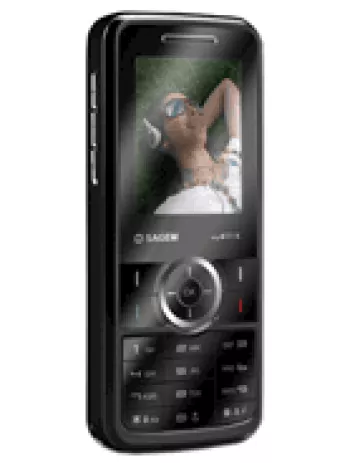
Overview of the Sagem MC 932
The Sagem MC 932 was a feature phone launched in the late 1990s, a time when mobile technology was completely different from today’s smartphone-dominated market. Announced in 1999 and now discontinued, this device targeted users who needed basic mobile communication functionalities. While it lacked the advanced features of modern smartphones, it provided essential services such as calling and SMS, which were quite sufficient at the time.
Design and Build
In terms of design, the Sagem MC 932 had a classic candy-bar shape common among mobile phones of that era. The dimensions of the phone were 116 x 45 x 18 mm, and it weighed approximately 117 grams. This size allowed it to comfortably fit in the hand and be easily portable. The phone used a Mini-SIM, which was the standard size before the introduction of smaller SIM cards in later years.
Display
The phone featured a monochrome graphic display capable of displaying up to 7 lines of text. Although this may seem primitive compared to today’s high-resolution displays, it was sufficient for checking messages, dialing numbers, and navigating through the phone’s menu. The monochrome screen was also energy-efficient, which helped in preserving the battery life.
Battery Life
One of the major aspects of the Sagem MC 932 was its battery life, powered by a removable Li-Ion battery with a capacity of 500mAh. The device offered a stand-by time of up to 150 hours and talk time of approximately 3 hours. For a feature phone, these numbers were decent, allowing users to use the phone for a few days without the need for a recharge.
Network and Connectivity
The device was built to operate on GSM networks, specifically supporting the GSM 900 and 1800 bands. Although it didn’t support GPRS or EDGE, the primary function of the network at the time was to facilitate voice calls and SMS. The lack of additional connectivity options like Bluetooth, WLAN, or a USB port demonstrated its focus purely on fundamental communication capabilities.
Sound and Alerts
For audio notifications, the Sagem MC 932 was equipped with a loudspeaker and supported vibration alerts along with downloadable monophonic ringtones. Although it didn’t include a 3.5 mm audio jack for connecting headphones, the speaker was adequate for receiving calls and alerts in everyday environments.
Memory and Storage
The phone had a limited memory capacity, reflecting the technology of its time. There was no card slot for expandable storage, but it did include an internal phonebook capable of storing up to 100 contacts. The focus on limited memory was primarily due to the functionality it provided, which did not require large storage components.
Messaging and Additional Features
Messaging features on the Sagem MC 932 were limited to SMS, as it was common during that period. Nonetheless, this allowed users to send and receive text messages efficiently. Additional features such as a clock, alarm, and basic games were included, adding a level of functionality beyond calls and texts. However, the device did not support Java, which restricted advanced application support.
User Experience
Using the Sagem MC 932 was straightforward, thanks to its simple interface and robust build. While lacking the intuitive user interfaces and touchscreens we see today, the tactile buttons were easy to use and durable. This basic interface meant that users could quickly make calls and send texts without steps that were too many or complex.
Summary
In summary, the Sagem MC 932 was a mobile device that fulfilled the essential communication needs of its users at the time. With a compact design, reliable battery life, and user-friendly interface, it exemplified the mobile technology of the late 1990s. Although primitive by today’s standards, the Sagem MC 932 remains a nostalgic reminder of early mobile technology growth and the simplicity of early mobile communications.
Key Features of Sagem MC 932
- Compact Design: Dimensions of 116 x 45 x 18 mm and weight of 117 g, making it easy to carry.
- GSM Technology: Supports GSM 900/1800 bands for basic connectivity.
- Display: Monochrome graphic display capable of showing up to 7 lines, suitable for simple text.
- Phonebook: Capacity to store up to 100 contacts.
- Sound Features: Includes a loudspeaker and supports vibration and downloadable monophonic ringtones for alerts.
- Basic Utility Features: Includes essential tools like clock, alarm, and games.
- Battery: Removable Li-Ion battery providing up to 150 hours of standby time and up to 3 hours of talk time.
Disadvantages of Sagem MC 932
- Lacks GPRS and EDGE support for data connectivity.
- Discontinued model, potentially affecting support and service.
- Monochrome graphic display with limited resolution (up to 7 lines).
- No expandable memory option (no card slot).
- Absence of camera functionality.
- Does not support Bluetooth or WLAN.
- Lacks a 3.5mm headphone jack.
- No positioning features like GPS.
- Does not feature a radio.
- Limited to SMS for messaging; no modern messaging apps.
- No Java support for additional software capabilities.
- Short battery talk time of only 3 hours.
View Also
More Phones
All Rights Reserved +13916 Phones © Mobilawy 2025
























